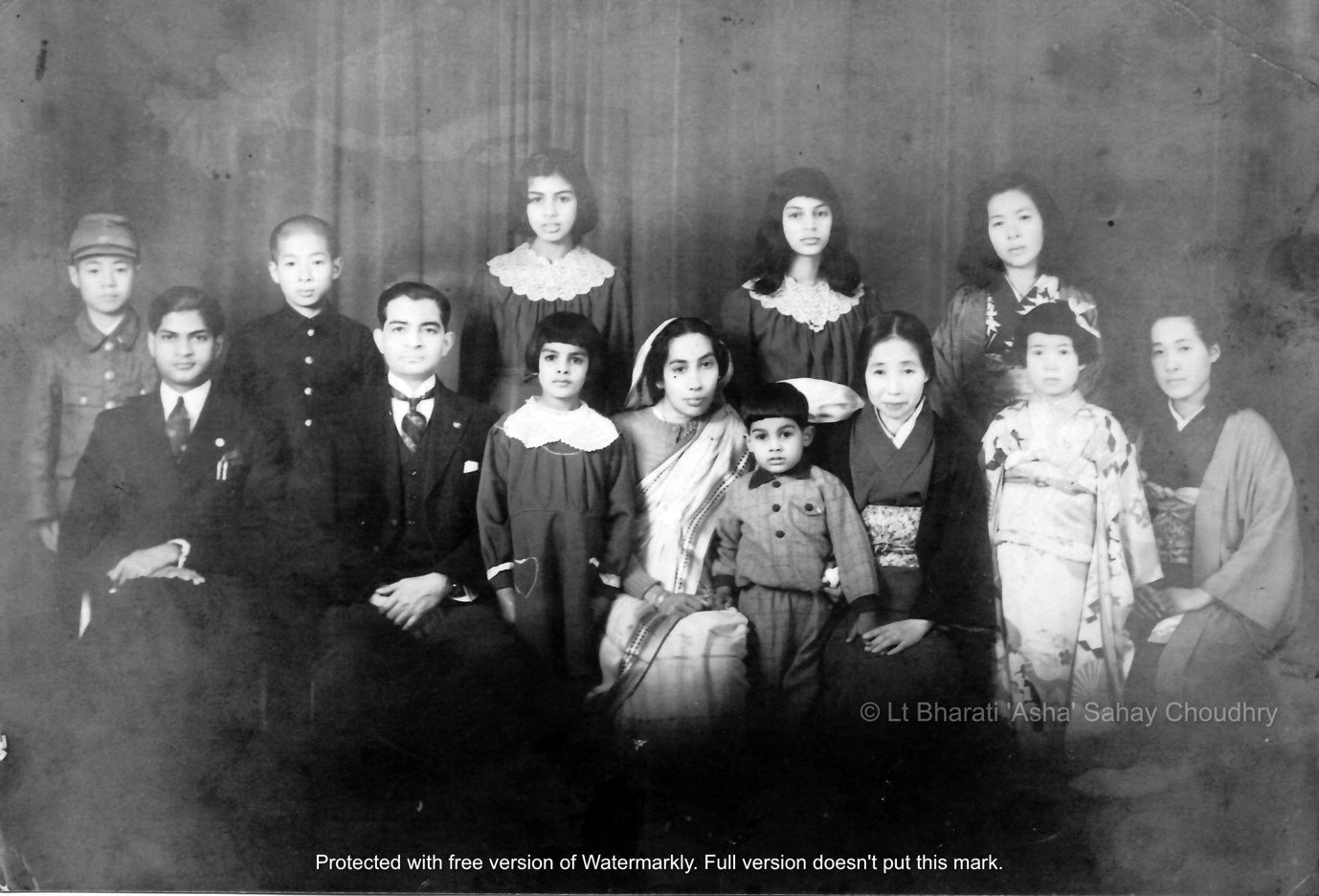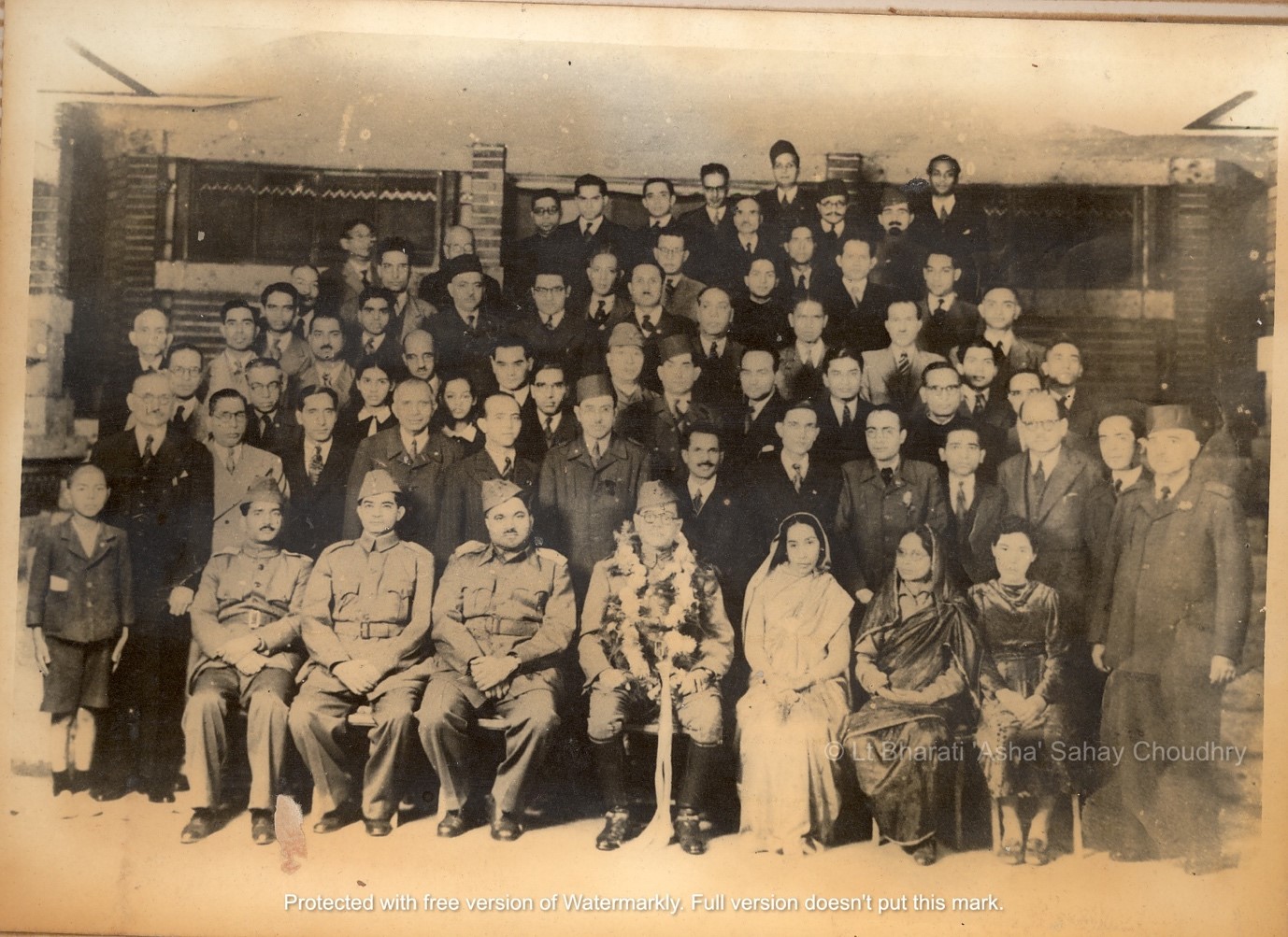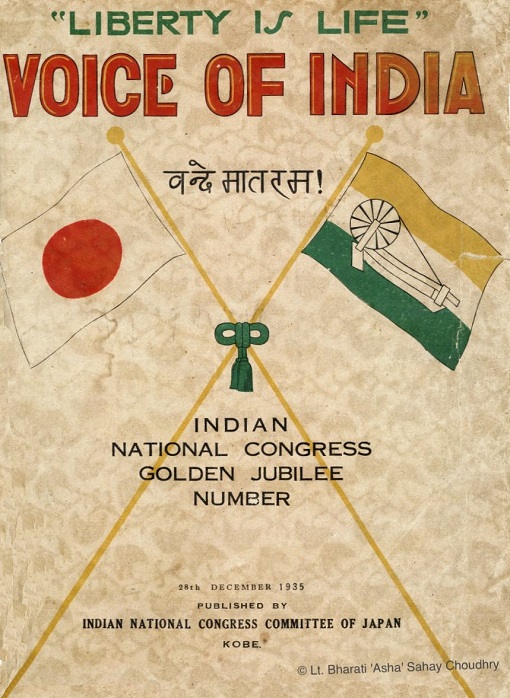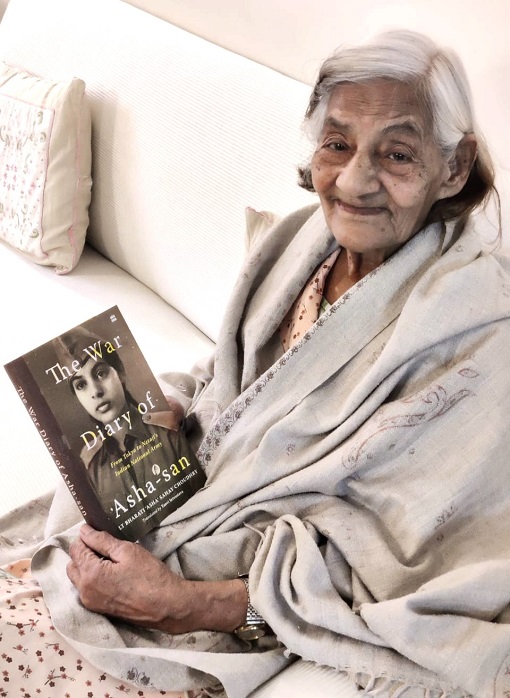The Saga of Lt. Bharati ‘Asha’ Sahay Choudhry: A Fearless Soldier of Netaji’s Rani of Jhansi Regiment
By :
The Saga of Lt. Bharati ‘Asha’ Sahay Choudhry: A Fearless Soldier of Netaji’s Rani of Jhansi Regiment
December 06, 2022
It is November (2022) in Patna, and the scent of winter lingers in the air. Lt. Bharati ‘Asha’ Sahay enters the room with a twinkle in her eye; she is 94 years old, but despite her age, her voice is firm and her gait is strong. She sits on a sofa near an evocative Madhubani painting and reminisces about events that took place 75 years ago—how she met Netaji and became a soldier in the Rani of the Jhansi Regiment of the Indian National Army.
A Family of Revolutionaries
Asha’s father, Anand Mohan Sahay, was a medical student in Patna when he first heard a speech by Mahatma Gandhi. Galvanized into action, he left his studies to join the Indian National Congress, serving as secretary to Dr. Rajendra Prasad. After the incident at Chauri Chaura, when the Non-Cooperation Movement was suspended by Mahatma Gandhi, Anand left India for Japan.
His wife, Sati Sen Sahay, niece of Deshbandhu Chittaranjan Das, joined him a few years later. Together, they started a magazine called Voice of India, promoting the cause of Indian independence among the citizens of Japan. Anand opened a branch of the Indian National Congress in Kobe. His brother, Satyadev Sahay, arrived from India at this time and would later join the Intelligence Bureau of the Indian National Army.
Throughout the 1930s and early 1940s, Anand Mohan Sahay established several branches of the Indian Independence League (IIL) across Asia, setting the stage for the arrival of Netaji Subhas Chandra Bose. Anand later became a close associate of Netaji, serving as a secretary in the cabinet of the Azad Hind Government (with ministerial rank).

The Sahay Family (1 January 1941): with their neighbours in Tokyo on New Year’s Day, 1941. Seated left to right: Satyadev Sahay, Anand Mohan Sahay, Sumona Sahay, Sati Sahay, Ashok Sahay, and the Ogatas. Riziya Sahay and Asha Sahay are standing behind Sati Sahay.
When Asha Sahay Met Netaji
Asha Sahay was born in Kobe on a winter morning in 1928. Due to the influence of her patriotic parents, she was brought up with the firm ideals of nationalism and learned to denounce Western imperialism from a young age. She was educated in traditional Japanese schools along with her siblings.
Asha was fifteen years old when she first met Netaji in Tokyo in 1943. Despite her initial hesitation, she asked for his permission to join the newly-formed Rani of the Jhansi Regiment of the Indian National Army. Looking at her frail physique, Netaji was not convinced; he was eventually persuaded by her firm resolve.

Netaji with members of the Indian community in Tokyo (1943). Sati Sahay is seated to the left of Netaji and Anand Mohan Sahay is second to the right of Netaji. Asha Sahay and her sister Riziya (Tulu) are standing in the third row behind Anand Mohan Sahay. Maj. Gen. J.K. Bhonsle and Maj. Gen. M.Z. Kiani is also seated in the first row.
Joining the Rani of the Jhansi Regiment
In 1945, when she was seventeen, Asha made an arduous journey from Tokyo to Bangkok and arrived at the Rani of Jhansi Regiment training camp located there. She was quickly inducted into the routine of military life—from saluting her seniors to marching with her compatriots. Ironically, food was more readily available in the camp than in Japan. In fact, what she struggled most with was language—she couldn’t speak Hindi or English well at that point in time. Asha gradually learned how to fire a machine gun and went on long marches with her platoon.
The Atomic Bombs & the Japanese Surrender
The bombings of Hiroshima and Nagasaki came as a shock to everyone, especially Asha. In those days, news travelled slowly and Asha assumed that it was Tokyo—where her mother and siblings were still residing—that was bombed. She assumed that her family did not survive the attacks.
After the Japanese surrender and Netaji’s mysterious disappearance in August 1945, Asha and her colleagues have imprisoned in the camp, and their weapons were confiscated. They were often harassed by Allied forces. Her father, Anand Mohan Sahay, was also imprisoned in Singapore.
Returning to India & Spreading word of the heroic efforts of the INA
Asha Sahay, Satyadev Sahay, and Anand Mohan Sahay returned to India in April 1946. They were given a warm welcome and asked to tour the country to spread the word of the heroic efforts of the INA and the Azad Hind Government. In 2017, Lt Asha was felicitated by President Ram Nath Kovind.

Lt Asha was felicitated by President Ram Nath Kovind and former President Pranab Mukherjee in 2017. Her son, Sanjay Choudhry, is to her right.
The War Diary of Asha-san
Lt. Bharati ‘Asha’ Sahay Choudhry has written her memories of the Second World War in a book titled The War Diary of Asha-san.

Cover page of Voice of India: Indian National Congress Golden Jubilee Number (28 December 1935).

Lt. Bharati ‘Asha’ Sahay Choudhry with her WW2 memoir, The War Diary of Asha-san (published 2022)
Contributed by: Tanvi Srivastava, Granddaughter-in-law of Lt. Bharati ‘Asha’ Sahay Choudhry